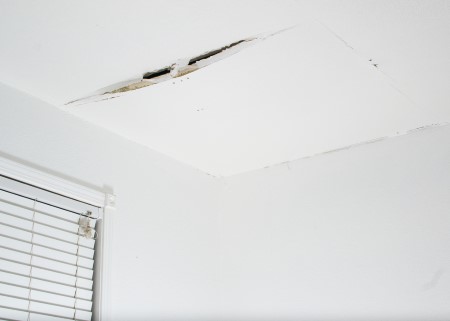Do's and Don'ts During Water Damages Emergency Situations.
Do's and Don'ts During Water Damages Emergency Situations.
Blog Article
Every person has got their personal theory about Preventing Fires and Water Damage In Your Home.

Water gives life, however water intrusion on some components where it's not intended to be can cause damage and also hassle. It can peel away the surface and also erode the material's foundation if the water permeates into your structure. Mold and mildew likewise grow in a moist setting, which can be harmful for your as well as your household's health and wellness. On top of that, homes with water damage scent moldy as well as old.
Water can originate from lots of sources like tropical storms, floodings, ruptured pipelines, leakages, as well as drain problems. If you have water damages, it's much better to have a working expertise of safety and security precautions. Here are a couple of guidelines on just how to handle water damage.
Do Prioritize Home Insurance Insurance Coverage
Seasonal water damage can come from floodings, seasonal rains, as well as wind. There is also an incident of a sudden flood, whether it originated from a defective pipeline that instantly bursts into your home. To shield your home, obtain house insurance that covers both disasters such as natural calamities, as well as emergencies like broken plumbing.
Don't Neglect to Switch Off Energies
When calamity strikes and you're in a flood-prone area, turn off the major electric circuit. Turning off the power stops
When water comes in as water offers as a conductor, electric shocks. Do not neglect to turn off the primary water line valve as a way to prevent even more damages.
Maintain your furniture secure as they can move about and also trigger added damages if the floodwaters are obtaining high.
Do Keep Proactive and Heed Weather Condition Informs
Storm floodings can be extremely unpredictable. If you live in a location pestered by floods, remain ready and positive whatsoever times. If you live near a body of water like a creek, river, or lake, pay attention to the news and also evacuation cautions. Obtain your belongings and also essential files from the first stage and basement, after that placed them in a safe place and the greatest possible degree.
Do Not Overlook the Roofing System
Your roofing contractor ought to take care of the faulty rain gutters or any other signs of damage or weakening. An assessment will avoid water from moving down your wall surfaces as well as saturating your ceiling.
Do Take Note Of Small Leakages
There are red flags that can attract your attention and suggest to you some damaged pipelines in your home. Signs of red flags in your pipes include gurgling paint, peeling off wallpaper, water touches, water discolorations, or dripping sounds behind the walls. Fixing and also inspect your plumbing repaired before it results in enormous damages to your home, funds, as well as an individual headache.
Don't Panic in Case of a Burst Pipe
Timing is vital when it comes to water damages. If a pipe ruptureds in your residence, instantly shut off your major water valve to reduce off the resource and prevent more damage. Call a trusted water damage restoration specialist for assistance.
Water gives life, yet water invasion on some components where it's not meant to be can result in damage and aggravation. In enhancement, residences with water damages smell old as well as stuffy.
Seasonal water damage can come from floodings, seasonal rainfalls, and wind. Indicators of red flags in your pipes consist of bubbling paint, peeling off wallpaper, water touches, water stains, or leaking sounds behind the wall surfaces. If a pipe ruptureds in your home, quickly closed off your major water valve to cut off the resource and also prevent even more damages.
Some Do's & Don't When Dealing with a Water Damage
DO:
Make sure the water source has been eliminated. Contact a plumber if needed. Turn off circuit breakers supplying electricity to wet areas and unplug any electronics that are on wet carpet or surfaces Remove small furniture items Remove as much excess water as possible by mopping or blotting; Use WHITE towels to blot wet carpeting Wipe water from wooden furniture after removing anything on it Remove and prop up wet upholstery cushions for even drying (check for any bleeding) Pin up curtains or furniture skirts if needed Place aluminum foil, saucers or wood blocks between furniture legs and wet carpet Turn on air conditioning for maximum drying in winter and open windows in the summer Open any drawers and cabinets affected for complete drying but do not force them open Remove any valuable art objects or paintings to a safe, dry place Open any suitcases or luggage that may have been affected to dry, preferably in sunlight Hang any fur or leather goods to dry at room temperature Punch small holes in sagging ceilings to relieve trapped water (don't forget to place pans beneath!); however, if the ceiling is sagging extremely low, stay out of the room and we'll take care of it DO NOT:
Leave wet fabrics in place; dry them as soon as possible Leave books, magazines or any other colored items on wet carpets or floor Use your household vacuum to remove water Use TV's or other electronics/appliances while standing on wet carpets or floors; especially not on wet concrete floors Turn on ceiling fixtures if the ceiling is wet Turn your heat up, unless instructed otherwise

Do you enjoy more info about Preventing Fires and Water Damage In Your Home? Place a short review below. We will be interested to see your opinions about this blog posting. Hoping that you come back again later on. Make sure you take a moment to share this blog entry if you enjoyed reading it. Thank you for going through it.
Report this page